StatsCan has released their new information on disability in Canada which compares 2022 survey data to 2017 survey data. With the rates of disability increasing, homeowners and landlords need to wrap their heads around home modifications that can prevent further injury while supporting independent living in a safe and dignified environment.
Overall, disability is increasing. Shockingly, disability among our youth reports a rate of 20% in the 15 to 24 age range reporting a disability, a 7% increase since 2017 which doesn’t bode well for the future of our healthcare system. All other age ranges are reporting increases over 2017 as well. In the working-age adult range (ages 25 – 64) 24% reported a disability while in the senior range (65+) the disability rate was 40%.
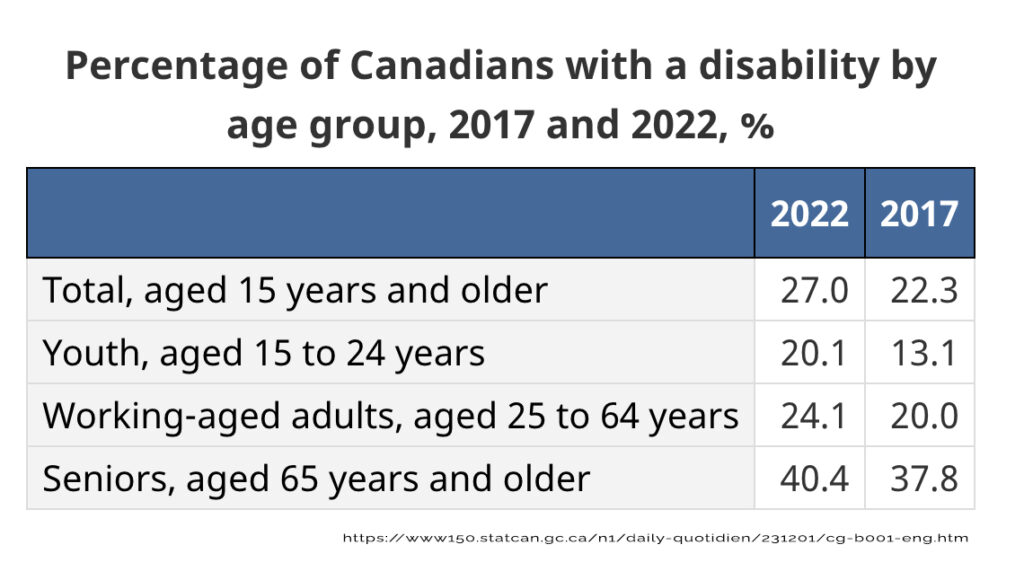
Not surprisingly, the most common disability was listed as pain-related with 62% of those with a disability reporting this type, followed by flexibility (40%) and mobility (39%). Mental health disabilities equalled mobility at 39%.
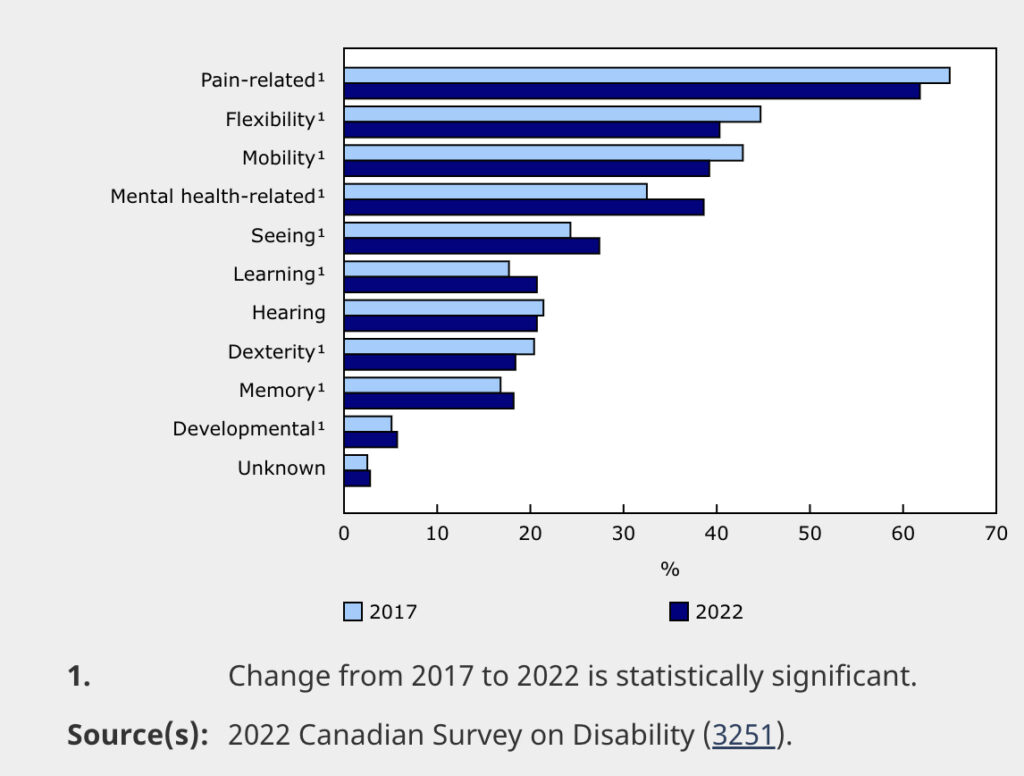
There is some good news in the report. The rate of employment for persons with disabilities has increased by 3% over the same data reported in 2017. Increased remote work opportunities due to the pandemic are credited with some of the increase while an increase in technologies, assistive devices and workplace accommodations are noted as both helpful and required in greater numbers to support workers with disabilities.
With a focus on residential, corporate and public space modifications, it isn’t hard to look at the numbers increasing and see that we have to do better in terms of making accessibility more mainstream. All levels of government need to incentivise architects, designers and builders to create homes that are accessible, visitable and adaptable, to do better on the design of public spaces and to incentivise renovations to older commercial buildings that have been grandfathered in accessibility requirements for new build and renovations. On the flip side, homeowners have to become better at understanding what is possible and advocating for these changes in building practices. Governments, particularly provincial and federal, need to look at a more global view of how change in one area has an impact across several other areas. In this case, housing that is more in keeping with the needs of people can, in many cases, prevent injury or perhaps prolong the number of years until an individual enters the healthcare system with disabilities. In addition, keeping people in their own homes in familiar neighbourhoods can reap benefits for mental health.
Within our homes we need to focus longer term on needs that may present as we age. For instance, having a fully accessible bathroom on the main floor is typically an urgent reno for those faced with an event that causes a disability. Not being able to use the bathroom to toilet or clean oneself is the number one reason people are moved into long-term care facilities. The 2022 statistics suggest that with nearly one-quarter of our working population reporting a disability, nearly that percentage set to move into the adult range in the years ahead plus 40% of seniors with a disability not to mention pain, flexibility and mobility as the top three reported disabilities, it makes sense to design homes with main floor 4- or 5-piece bathrooms. Given an existing stock of homes that favour 50’s style main floor powder room design, that reno that homeowners eventually consider should include bigger thinking. If you had to, could you live on one floor and have all of your needs met? The answer needs to be yes.
Equally important is entry and exit from our homes. Builders do not want to dig down far enough to lower the sewer inverts which would allow the option of barrier-free entry, nor do they typically want to switch their building practices to, for instance, bury the floor joist inside of the concrete which would mean building the concrete foundation higher instead of putting them on top of the concrete. This would prevent water from getting to the wood, an issue in a 4-season country, but it’s a different building method and it’s not taught in trade schools in Canada. Yes, it adds to the cost of construction if only a handful are being built but the extra costs start to equalize when a development includes more of the same building method.
Accessibility isn’t taught to architects, designers or any of the trades so they must learn these alternate methods on their own. Some do and are finding an increasing market for their time as our population ages and acquires disabilities that prevent them from living independently, safely and with dignity. I have worked with contractors who will only build barrier-free showers, for instance. Hint: call them Euro showers and everyone wants them!
Think of your home assuming you want to live in it and your chosen neighbourhood, long term. Make a plan for your renovations and make sure to include modifications that will keep you living independently, safely and with dignity for as long as possible. Don’t know where to start? There is a great deal of information available on the internet if you enjoy doing research. For those who want to get to the point, Real Life Renos has written a course that will allow you to guide yourself from space to space inside and outside of your home and consider the options.

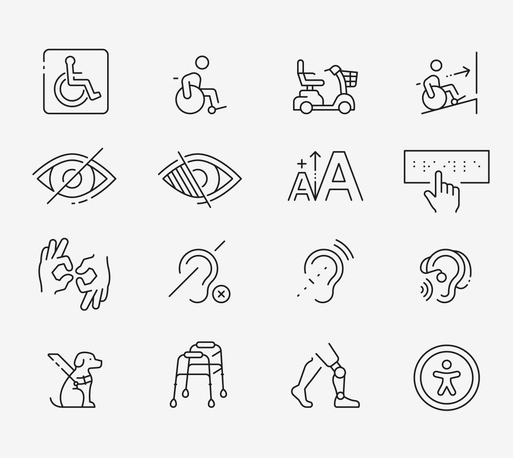
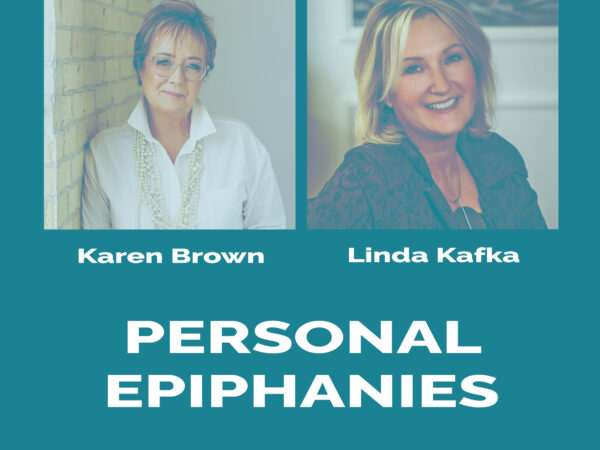

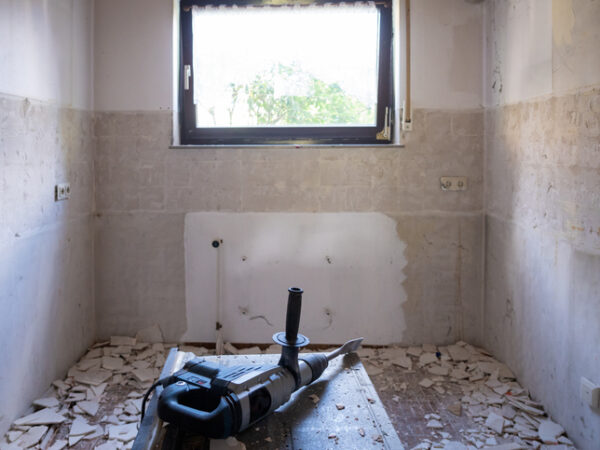

Add Your Voice
0 Comments
Join the Discussion